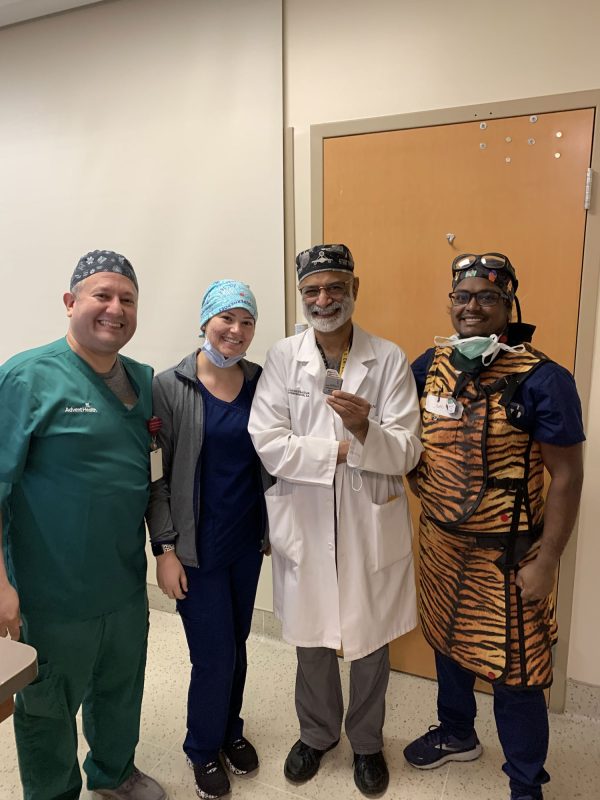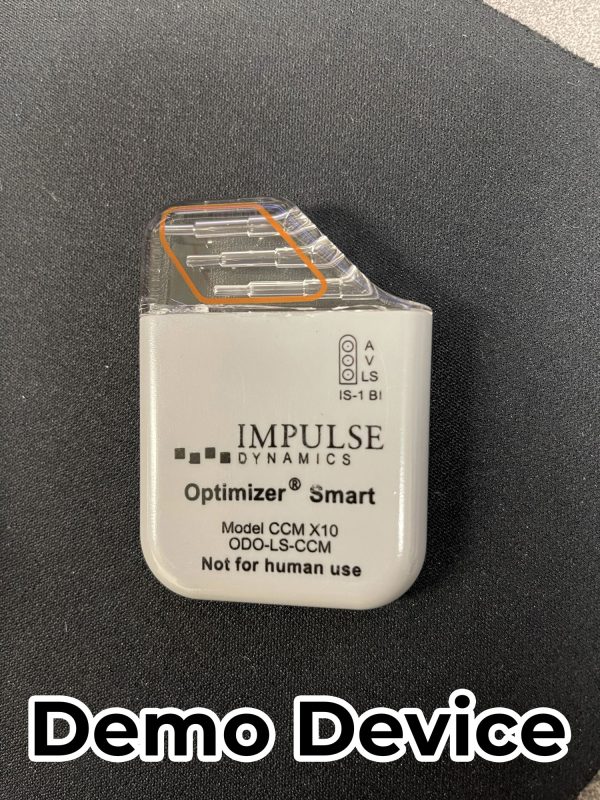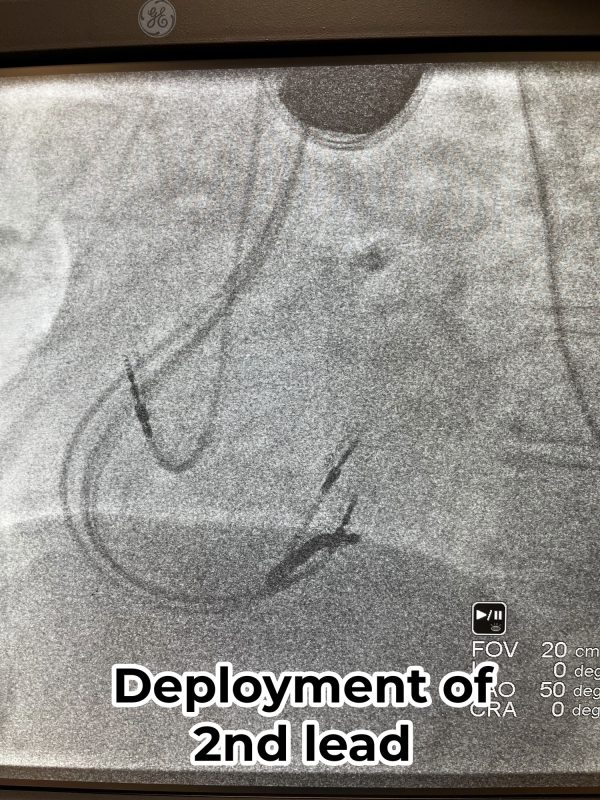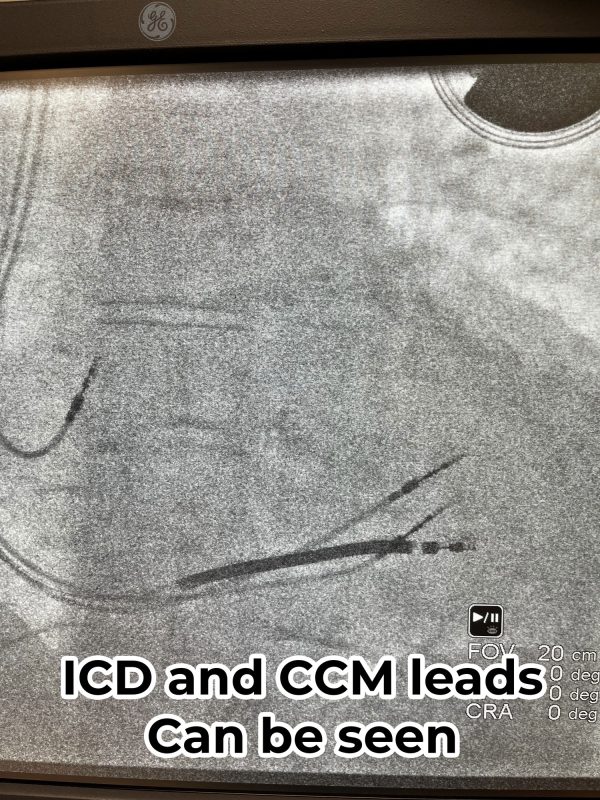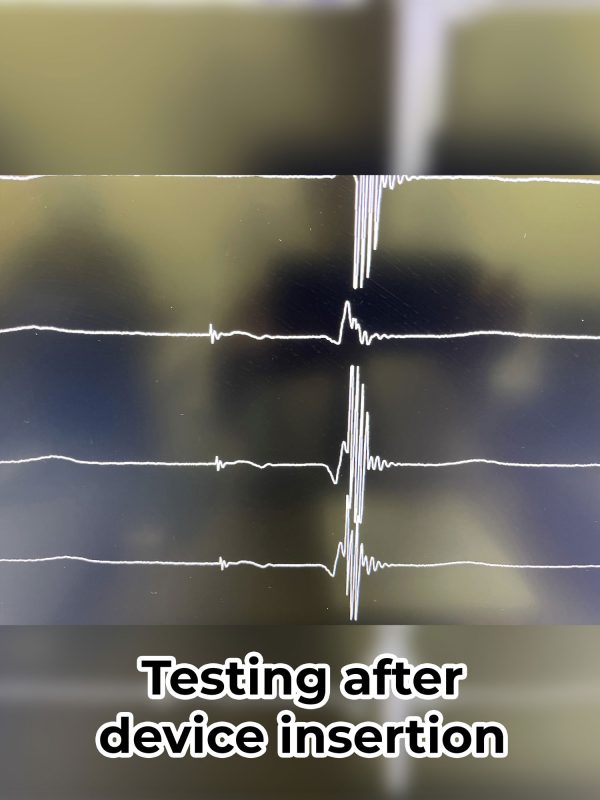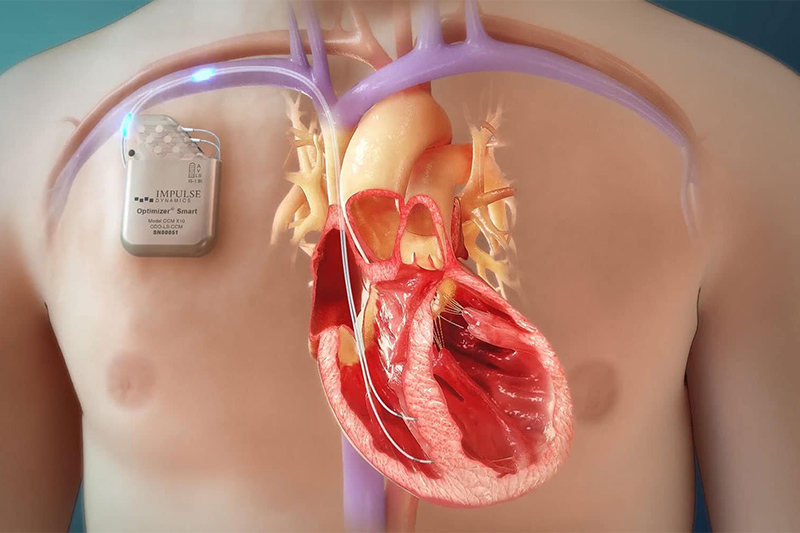Recently, I had the privilege to implant a new type of medical device in one of my patients with heart failure.
This is a very active 76-year-old female patient who has had a myocardial infarction (heart attack) in 2019, and has had multiple stents, and the patient has continued to have symptoms of congestive heart failure which include shortness of breath on exertion, exercise intolerance, and the ejection fraction was low at 30-35%. The patient ready has an ICD in place.
On account of the ongoing symptoms of shortness of breath on exertion, and exercise intolerance, in spite of maximum medical management including beta-blockers and Ace inhibitors and diuretics, the decision was made to implant the new cardiac contractility modulation (CCM) device.
The fluoroscopic images clearly demonstrates that this patient ready had a dual chamber ICD. The ICD is identified by the large electrode inside the right ventricle, and there are now 2 additional pacemaker wires which abut against the interventricular septum in the image.

